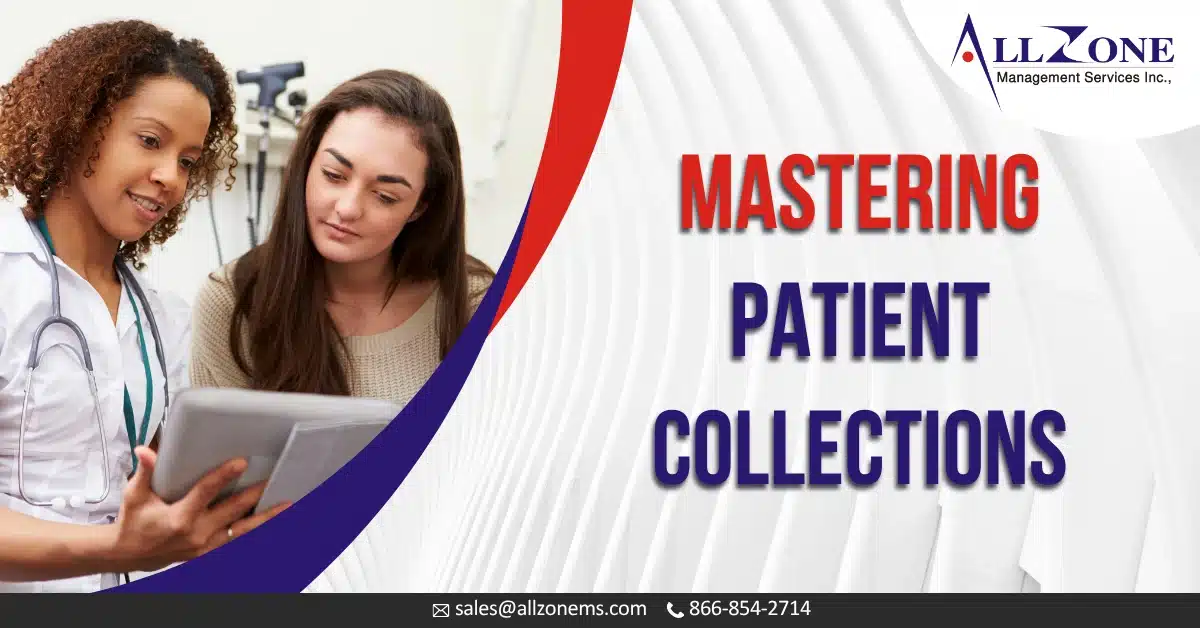In today’s rapidly evolving healthcare landscape, one of the biggest challenges facing providers isn’t delivering care—it’s getting paid for it. The traditional methods of collecting patient balances no longer cut it. As the healthcare consumer grows more empowered, informed, and selective, providers must rethink their strategies to improve patient collections.
At Allzone Management Services, we understand that behind every claim is a patient, and behind every patient is a story. Our mission is to bridge the gap between healthcare and revenue cycle performance with a focus on compassion, innovation, and results.
Today, let’s explore five proven strategies to help provider’s master patient collections while delivering an outstanding patient experience.
The Shift in the Healthcare Consumer Mindset
Before we dive into the strategies, it’s important to understand why a change in approach is necessary.
Today’s healthcare consumers behave more like retail consumers. With the rise of high-deductible health plans (HDHPs), patients are now the largest payers of healthcare services. In fact, recent studies show that nearly 30% of a provider’s revenue now comes directly from patients.
But patients aren’t just paying more—they’re also demanding more. They expect:
- Price transparency
- Convenient payment options
- Clear communication
- Digital engagement
When these expectations aren’t met, payment delays and defaults increase. The good news? Providers can turn this challenge into an opportunity by implementing thoughtful, patient-centric collection strategies.
1: Start the Financial Conversation Early
Transparency builds trust
One of the most powerful things a healthcare provider can do is set clear expectations before services are rendered. Patients need to know what they’re paying for, how much it will cost, and what their options are.
Best Practices:
- Pre-service estimates: Offer real-time, accurate cost estimates. Tools like automated patient estimators integrated into your RCM system can make this seamless.
- Benefits verification: Confirm insurance coverage and co-pays ahead of time.
- Financial counseling: Offer a dedicated team or support to explain benefits and payment plans to patients in plain language.
2: Offer Flexible Payment Options
Patients want options, not ultimatums.
Gone are the days of “pay in full or face collections.” Today’s patients are dealing with inflation, rising costs of living, and unpredictable insurance responsibilities. Flexible, convenient payment options go a long way in improving collections.
Best Practices:
- Installment plans: Break larger balances into manageable payments over time.
- Automated payments: Allow patients to set up recurring payments securely online.
- Discount incentives: Offer discounts for early or prompt payment.
Digital Payment Tools Matter:
- Mobile payments
- Text-to-pay
- Online portals
3: Enhance Patient Communication
Communication is key to collection
Many unpaid bills stem from misunderstanding—not unwillingness. Medical bills are confusing. Codes, terms, charges, adjustments—it’s a maze for the average person. Effective, empathetic communication transforms billing into a dialogue, not a demand.
Best Practices:
- Plain language billing: Use clear, easy-to-understand statements.
- Proactive reminders: Send automated but personalized texts, emails, or calls before payment is due.
- Multi-language support: Provide billing communications in the patient’s preferred language.
Bonus Tip:
Use empathy. Train staff to approach financial conversations with kindness and patience.
4: Embrace Technology and Automation
Automation doesn’t replace the human touch—it enhances it
Modern healthcare consumers are digitally savvy. They expect seamless experiences similar to what they find with their banks or e-commerce providers. Technology can automate routine tasks while freeing staff to focus on high-value activities like patient advocacy.
Tools That Transform Patient Collections:
- Patient portals with real-time balances and payment history
- E-statements over paper billing
- Chatbots that answer billing questions 24/7
- Analytics to segment patient populations by balance, propensity to pay, and engagement behavior
Bonus Tip:
Leverage data to create patient personas and tailor your communication and Medical billing strategy accordingly.
5: Train and Empower Your Staff
Your team is the frontline of the patient financial experience.
No matter how smart your systems are, success ultimately depends on the people using them. Staff must be trained not just in collections, but in compassionate collections.
Best Practices:
- Ongoing training in billing systems, payer rules, and communication
- Scripting for sensitive financial conversations
- KPIs that align performance with patient satisfaction, not just dollars collected
Culture Matters:
Encourage a culture where empathy, compliance, and professionalism are the standard—not the exception.
The Results Speak for Themselves
When providers implement these five strategies—early engagement, flexible payments, better communication, smart tech, and empowered staff—collections improve without compromising the patient experience.
Real-World Impact:
- Fewer bad debts
- Faster payment cycles
- Higher patient satisfaction
- Lower cost to collect
At Allzone, we’ve seen clients improve their patient collection rate by 20% or more just by revamping their approach with these strategies.
Patient Collections in 2026 and Beyond
As healthcare continues to evolve, so will the expectations of patients. Tomorrow’s patients will demand:
- More personalization
- Real-time financial insights
- AI-powered billing support
- A frictionless experience across all touchpoints
The providers who thrive will be those who see patient collections not just as a revenue issue—but as a patient experience opportunity.

